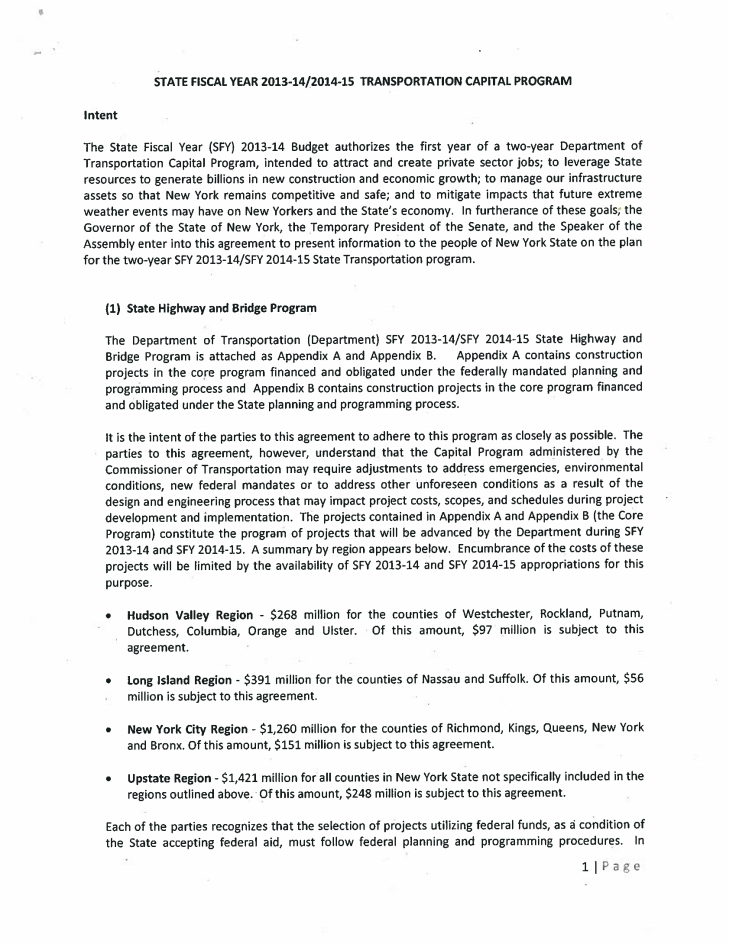
Trying to understand how decisions are made in Albany is bewildering, and amidst the recent scandals, it is hard not to be skeptical about the process. Unfortunately, budget details don’t come together until the last minute, leaving very little time for review by legislators and the public. Lately, the spotlight has been focused on Malcolm Smith’s confidence that he could dig into multi-modal transportation funds, which he claimed are “outside the budget and always around,” but there appears to be other ways that well-placed power brokers could slip in their requests unnoticed.
Possible case in point: the Memorandum of Understanding (MOU) between the legislature and the NYS Department of Transportation regarding the allocation of an additional $5 million in transit capital funding.
In early January, Governor Cuomo released his proposed budget, but it had no details on NYSDOT’s upcoming 2-year capital plan. On January 31, there were joint legislative hearings on the proposed budget and for the second year in a row, legislators asked NYSDOT Commissioner Joan McDonald for the list of capital projects that the Department would tackle. Following that hearing, Tri-State repeatedly asked legislators and staff whether they had received the list yet. The response, all the way up to the week that budget bills were being printed, was “no.”
This MOU, which eventually appeared at the last minute, was never made public, leaving legislators and their staff members barely any time to review the document before voting on the budget.
The MOU signals that next year’s budget will authorize a five-year capital program (for state fiscal years 2015-20) instead of a two-year program, which will help regions plan on a more long-term basis. There is also a new $155 million pot of funds “to accelerate Department projects of regional and community importance,” but details on those projects won’t be forthcoming until 45 days after the budget is passed. The MOU also calls for a requirement to report the progress of projects, but no requirements that those reports be made public.
And there is one more pleasant surprise. The MOU includes an additional $5 million in capital funding for downstate suburban and upstate transit systems, as well as a new $25 million reserve fund for future capital needs. After years of allocated, but undisbursed, capital funds from Albany, transit systems should have no trouble putting this funding to good use.
What’s more surprising, however, is how this funding was disbursed. For example, it certainly wasn’t allocated based on population: Suffolk County, with a population of 1.49 million, received only $25,988 — 88 percent less than the $220,270 that less-populated Nassau County (population 1.34 million) received.
It also wasn’t based on ridership. Dutchess County (404,000 annual ridership, $21,833 in capital funding) and the Town of Huntington (263,000, $24,967) each received about as much as Suffolk County, which has an annual transit ridership of over six million.
There may be a perfectly understandable explanation for this disproportionate allocation, but multiple queries, including to the Department of Budget, have yet to receive a response. The lack of clarity on how this funding disbursement was determined serves as just another example of Albany’s black box budgeting.

[…] Less than two weeks remain before the ink will dry on the New York State budget, yet NYSDOT still has not submitted their list of projects that will be funded through the budget—a repeat of previous poor performance. […]